
Want to know how to design an ecommerce website? Let’s start with this.
An e-commerce website is a vital tool for any entrepreneur looking to have a successful online business. It takes careful planning and designing of a beautiful website that will surely draw attention, engage customers and make sales. Effective e-commerce site designing involves deliberate strategizing for better outcomes in terms of meeting the goals of your business and communicating with your target audience.
This chapter takes you through the key steps and best practices when designing an ecommerce website. From conceptualization to execution, we will give you everything necessary to create a compelling online store that pushes your sales effectively.
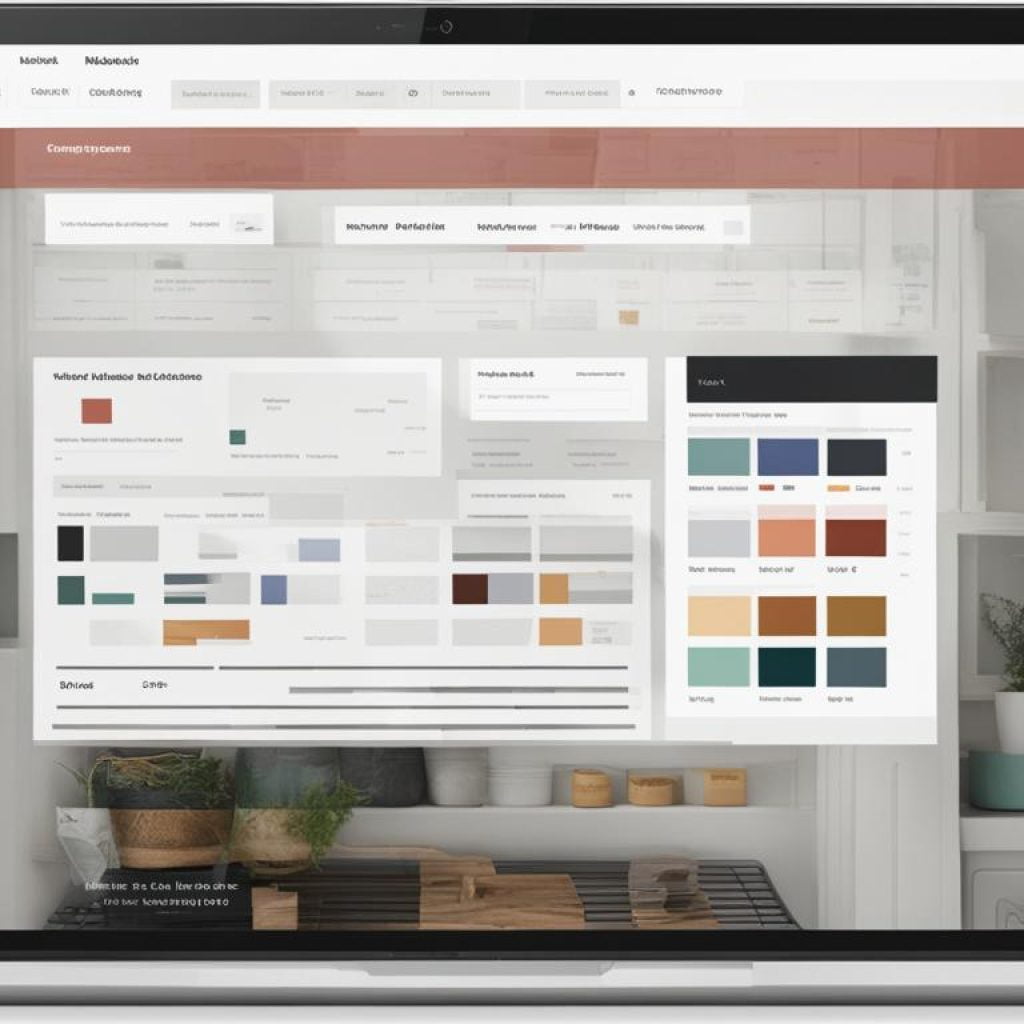
Key Takeaways:
- Designing an ecommerce website requires careful planning and execution.
- Effective ecommerce website design can attract visitors and increase engagement.
- A well-designed ecommerce website can ultimately drive sales for your business.
- Consider your business goals and target audience when designing your ecommerce website.
- Follow best practices and stay up-to-date with design trends for optimal results.
Designing Ecommerce Websites
There are several things that you must understand before diving into designing an ecommerce website. This includes easy navigation, good product display, enjoyable shopping experience, which leads to increased sales and customer satisfaction. In the next part of this section, we shall look at ecommerce website layouts, design best practices and trends that are currently most popular in the market as well as some other good tips for creating successful websites.
Ecommerce Website Layouts
When constructing an ecommerce website, every piece must fit seamlessly together to provide users with a hassle-free shopping experience. Your layout has to be appealing visually while still being easy enough for people who don’t know how it all works yet so they can navigate around easily as well; key information like products on offer or promotions needs highlighting but there should also be plenty of ways into other sections from here too. Common examples include:
| Ecommerce Website Layout | Description |
|---|---|
| Simple Linear | A basic, linear layout that is easy to navigate. |
| Mosaic | A more complex layout that showcases products in a visually appealing way. |
| Grid | A layout that displays products in a grid format, making it easy for users to compare offerings. |
To enhance user experience and eventually drive sales go for the layout that suits your business purpose.
Best Practices in Ecommerce Website Design
One needs to adhere to certain rules while creating their own online shop: you should consider this 5 simple tips on how not get lost during such undertaking!
The most important thing is simplicity when it comes down making decisions about design of your website since better content always beats fancy decorations – people want information not pictures. Besides, high-quality images are always recommended to showcase a sample of the products you are selling. Also, ensure that it is easy for users to filter and sort through different product items. The checkout process should be simple and streamlined as much as possible. Finally, your website needs to be mobile friendly.
By following these best practices, your ecommerce website can stand out in a crowded online market.
- Keep your website design simple and easy to navigate.
- Use high-quality images to showcase your products.
- Enable easy filtering and sorting of products.
- Make the checkout process as simple and streamlined as possible.
- Ensure your website is optimized for mobile devices.
Focusing on these best practices can help your ecommerce website stand out in a crowded online market.
Trends in Ecommerce Website Design
Updating an e-commerce website design will give it a modern look that attracts customers even more. The most famous current trends for this type of web design include:
- Dark Mode: It is when the website uses dark colors instead of bright ones thus appearing unique and modern.
- Minimalism: This style emphasizes the use of white space and typography with a clean, uncluttered layout.
- Custom Illustrations: These are hand-drawn pictures that give a personal feel to your site’s design.
- Video Backgrounds: They make the background move and attract visitors’ attention because it creates an engaging atmosphere which will increase their interest on something like this or other such things they see while browsing through pages online too much longer so keep them around instead!
Incorporating current design trends can give your ecommerce website a fresh and trendsetting look that will keep users engaged.
User-Friendly Ecommerce Website Design
Creating a user-friendly ecommerce website is a crucial aspect of ecommerce website design. It involves optimizing your website structure to ensure ease of navigation and a pleasant user interface. A user-friendly website helps in improving customer experience, increasing engagement, and ultimately driving more sales.
Optimizing Ecommerce Website Structure
Optimizing your e-commerce website structure involves creating a well-organized layout that will make navigation easy for clients. To achieve this, you can categorize your products and give them clear menus as well as having search functionalities that allow customers to browse and buy.
Also, all pages on your site should be easily accessible either from the main menu or via internal links within the site. Including a search bar on your web site also improves navigation on the site and helps users find what they need quickly and easily.
Creating a User-Friendly Interface
It is essential to create an interface that is user-friendly for shoppers in order to provide a seamless shopping experience. Simplifying payment processes, using clear simple language and giving customer directions that are easy to understand while completing their purchases are some of the ways of achieving this
Furthermore, it should be optimized for mobile devices to make it simple for people using small screens. Responsive design assists with that; it enables websites to change their appearance according to various screen sizes thus ensuring best viewing experience on every device.
Enhancing Website User Experience (UX) for E-commerce Sites
It’s important when designing an ecommerce website because UX affects how users interact with a site leading more conversions. For example:
- Reducing page loading time.
- Using concise language.
- Using high-quality images.
- Creating clear instructions.
- Making sure your site can be easily navigated across different devices.
Therefore, by optimizing ecommerce website structure, creating user friendly interface and enhancing UX of your website you can develop a unified buying process and get more orders from consumers at your online store.
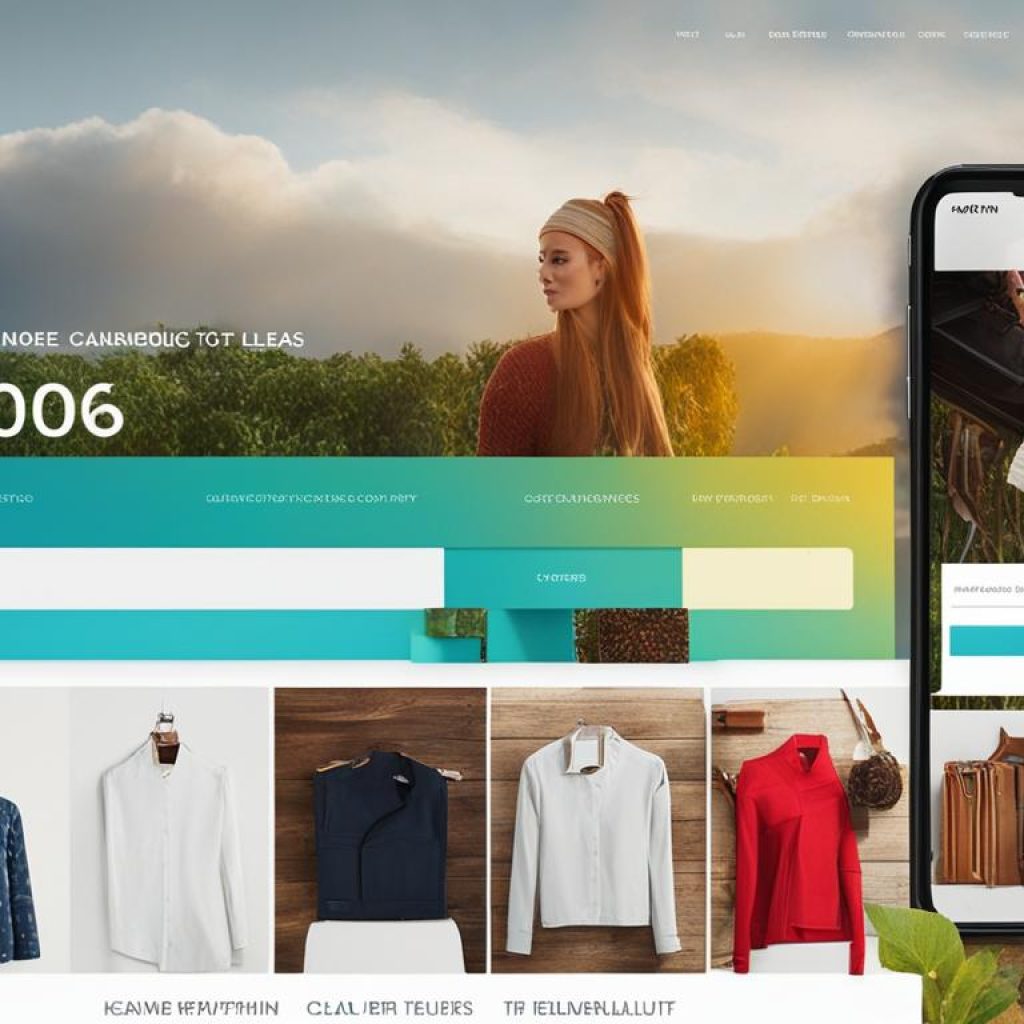
Responsive Ecommerce Website Design
A responsive design is vital in today’s digital era if you want to attract customers. Consequently, your online store needs a mobile-friendly ecommerce website design since more people are accessing the internet using mobile devices. Besides enhancing user experience and engagement, it is also key in search engine optimisation (SEO) which can increase site visibility and organic traffic.
This means that having a responsive ecommerce website implies that the layout and content of your site changes with different screen sizes to provide seamless browsing experience for your customers regardless of the device they are using. A situation that can be achieved by among other things utilizing flexible grids, images and fonts that adapt their sizes to fit in the screens of a given device.
Mobile-Friendly Ecommerce Website Design
Most people today go online using their mobile devices. Hence, it is necessary to make sure that an e-commerce website is mobile friendly in order to tap into this growing market. These include user friendly interface, simple navigation structure and quick load speeds for your ecommerce website designed for mobile devices.
The use of responsive design will ensure a mobile-friendly ecommerce website. Through this, your website can automatically adjust to various screen sizes and there is no need for multiple site versions. This also implies that your website will never be obsolete as more screens with different dimensions come out.
SEO for Ecommerce Websites
Search engine optimization (SEO) is very important in an online store. A responsive ecommerce website design improves the ranking of your website on search engines by providing better user experience and reducing bounce rates.
Google has also introduced mobile-first indexing, meaning that they give preference to the mobile version of a website’s content when indexing and ranking it. Thus, this underlines the significance of a mobile friendly e-commerce web design.
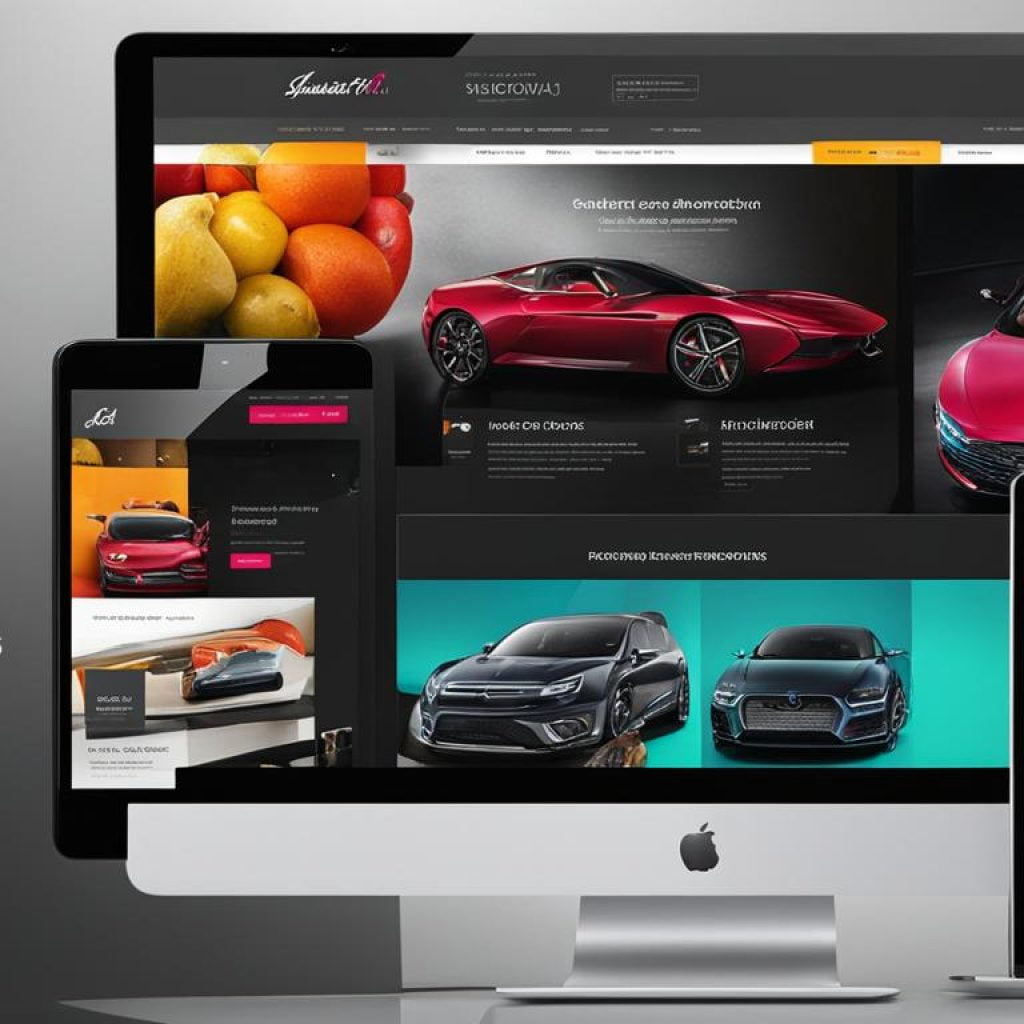
Optimizing your ecommerce website for search engines means using targeted keywords, creating site structure specifically for search engines, and producing high-quality content that relates to your audience. By integrating responsive design techniques into your ecommerce websites, not only can you improve its user interface but also improve its SEO efforts too.
To conclude, it is vital to have a responsive e-commerce web design that is optimized for mobile devices if you want to succeed in your online store. It enhances user experience, boosts engagement levels and improves SEO rankings. Best practices for mobile-friendly designs should be integrated into the creation of this online store while optimizing the website structure to provide customers with seamless shopping experiences leading to increased sales and repeat businesses.
Designing an Engaging Online Store
For an ecommerce website design, creating an engaging online store is the most important aspect that will attract potential customers and keep them coming back. To make customers’ journey through shopping easier, ensure that product pages are both visually appealing and informative. The following are some tips on how to create such a store:
- Visual appeal: Use high-quality images of your products that let consumers see them from all angles so they know exactly what they’re buying. Also consider incorporating videos or 360-degree product views.
- Simplicity: Customers may be overwhelmed and confused by a cluttered design. Ensure that the website’s design is simple, neat and consistent.
- Promote offers: Use banners or pop-ups to highlight promotions, sales or new products. This will boost sales and increase conversions.
- Customer reviews: Displaying customer reviews on the product pages can help in building trust and credibility with potential customers. Positive reviews also motivate customers to make purchases.
- Sell more products: Based on data analysis, you can recommend similar products elsewhere within your site or even during checkout on product pages. Offering personalized recommendations increases purchasing power of consumers.
These ecommerce website design tips will help create an online store that attracts customers to buy a product. Remember to keep it simple and consistent so as to attract customers using visual elements and promotions.
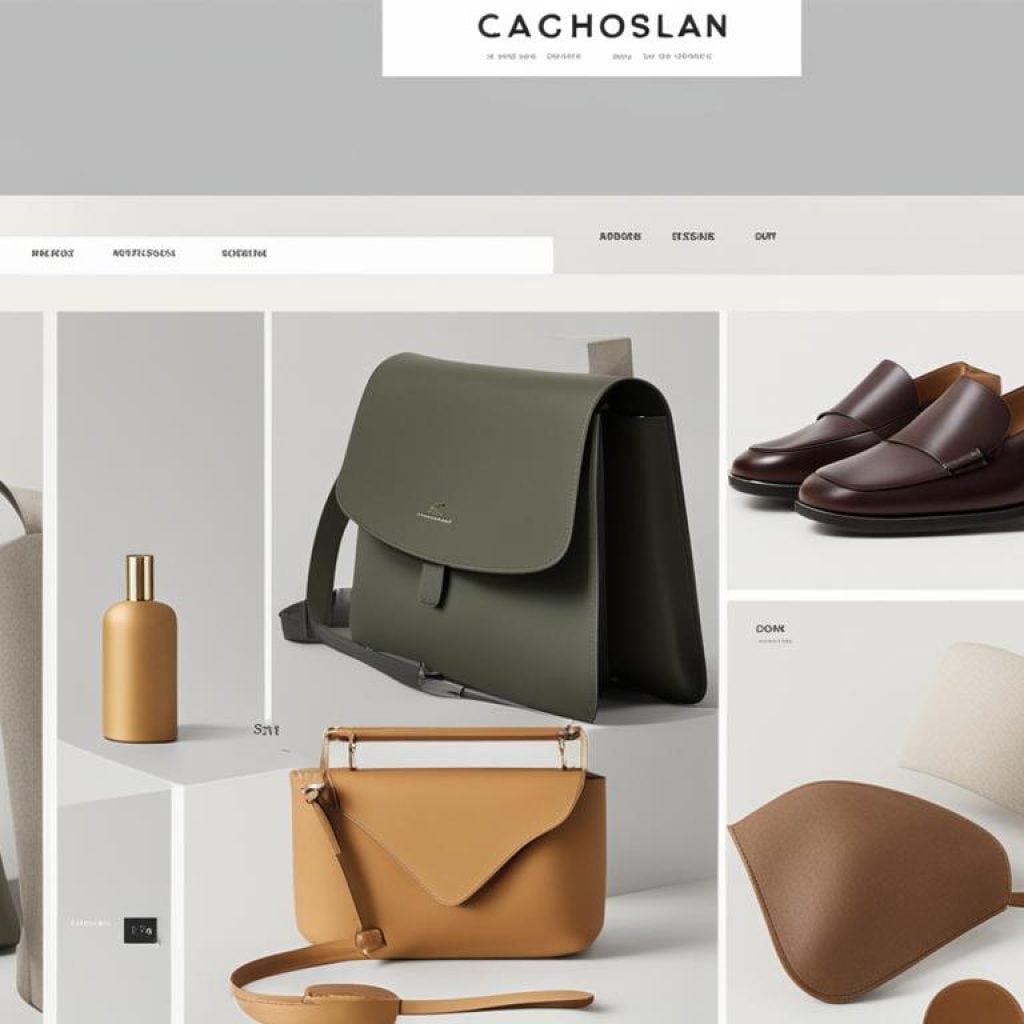
Implementing Ecommerce Website Layouts
The layout of an online store is one of the aspects of ecommerce web design that plays a critical role in determining user experience as well as whether or not he/she will convert. If your layout is well-optimized, you can improve its usability as well as navigation thereby enhancing customer experience while making it easier for them to find products and buy them.
Numerous layouts are available for e-commerce websites, each with its own strengths and limitations. Consider your business requirements and customer preferences before you decide on a design. Some of the widely used layouts for an e-commerce website include:
| Ecommerce Website Layout | Description |
|---|---|
| Grid Layout | A grid-based layout displays products in a symmetrical grid, making it easy for customers to scan and compare items. |
| List Layout | A list-based layout displays products in a vertical list, allowing customers to view more product details at a glance. |
| Masonry Layout | A masonry-based layout displays products in an irregular grid, creating a dynamic and visually engaging display. |
Irrespective of the option you choose, make sure that your website is responsive and adapts to different screen sizes. A responsive design will optimize your website for mobile users, providing a seamless shopping experience across all devices.
Remember that simplicity is key when choosing a layout for your ecommerce website. A congested layout can drive customers away while a neat one fosters credibility and trust.
In general, the e-commerce website layout you adopt should be guided by your business objectives as well as consumer preferences. Your web site functionality can benefit from implementing these user-friendly layouts which translates into better conversion rates.
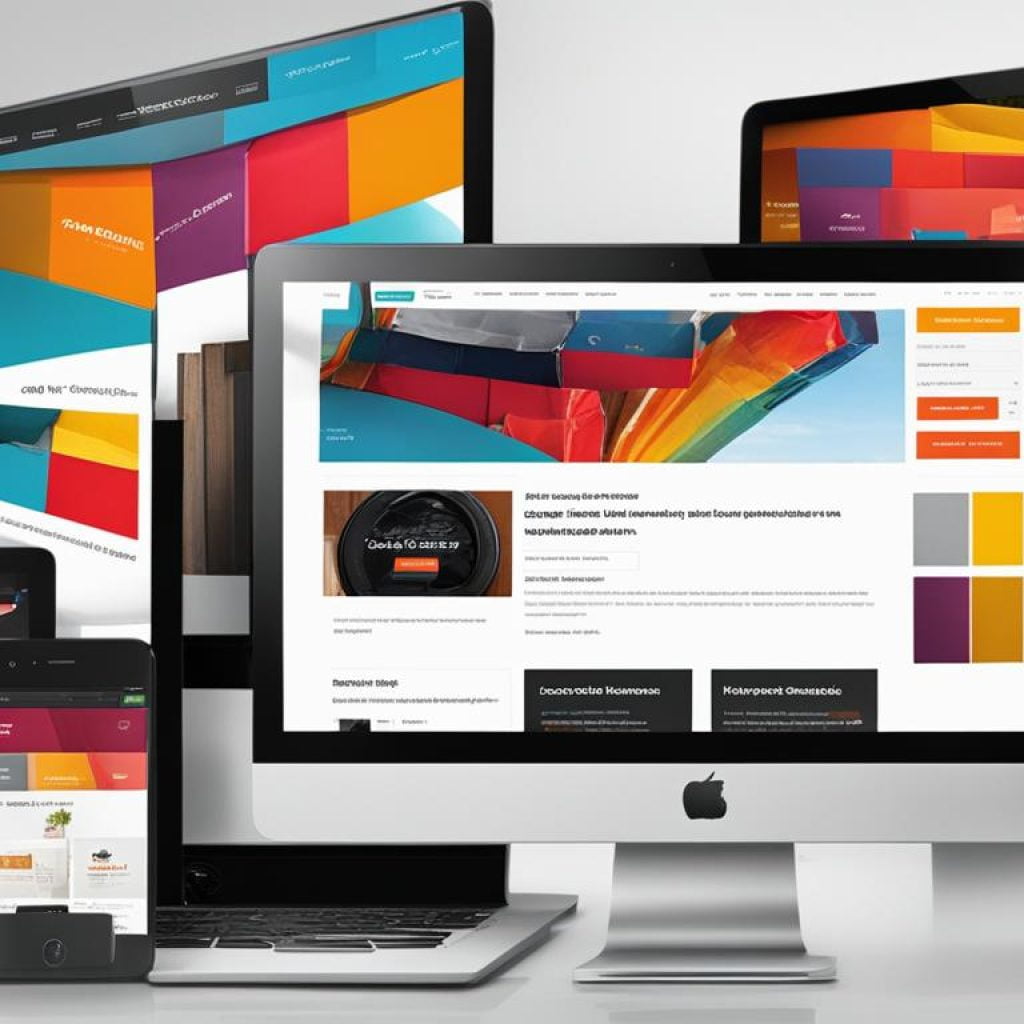
Keeping Up with Ecommerce Design Trends
Creating an ecommerce website is not just about designing a functional site that meets your business’s objectives.Instead, it is about creating an online store that is visually appealing with interactive features that will engage visitors and give them unique shopping experiences.You have to keep yourself updated of the current trends in e-commerce design so that you remain competitive.
Ecommerce Design Trends
Ecommerce design trends continue to change meaning constant updates are necessary. Some of the most popular ecommerce design trends include:
- Interactive product displays that allow customers to view products from all angles
- Custom illustrations and animations that make the shopping experience fun and engaging
- Chatbots that provide customers with 24/7 support and assistance with their purchases
- Micro-interactions that provide feedback to customers as they navigate your online store
- Minimalist design that emphasizes clean, uncluttered layouts and easy-to-read typography
All these design trends can greatly influence how users interact with your site and consequently how engaged they are. By incorporating these trends in the website design, you can differentiate yourself from competitors and create an unforgettable shopping experience.
Ecommerce Design Ideas
If you want to redesign your ecommerce website, it is important to understand what you are trying to achieve. The following are some of the ideas for ecommerce design that could guide you during such a process:
- Create a unique and memorable brand identity with an eye-catching logo and consistent color scheme throughout your website
- Incorporate social proof elements such as customer reviews and rating systems to build trust and credibility with your audience
- Use high-quality images and videos to showcase your products and give customers a realistic view of what they will receive
- Make use of white space to guide your customers’ eyes towards your products and call-to-action buttons
- Implement responsive design for ecommerce websites, ensuring that your site is optimized for all devices, including mobile and tablet
By following these guidelines, one can create an attractive and efficient business website which will ultimately help increase sales.
Responsive Design for Ecommerce Websites
Your website should be optimized for all devices, including smart phones, tablets, laptops and desktops. The trend of using mobile devices has increased; therefore, ecommerce websites must be designed to adapt to the different screen sizes for an optimal viewing experience.
Your customers are not the only ones who can benefit from responsive design for ecommerce sites but also your website’s SEO. Google and other search engines now prioritize mobile-friendly sites on their search engine results pages (SERPs) and thus having a responsive website means better SEO for your site hence improved online visibility.
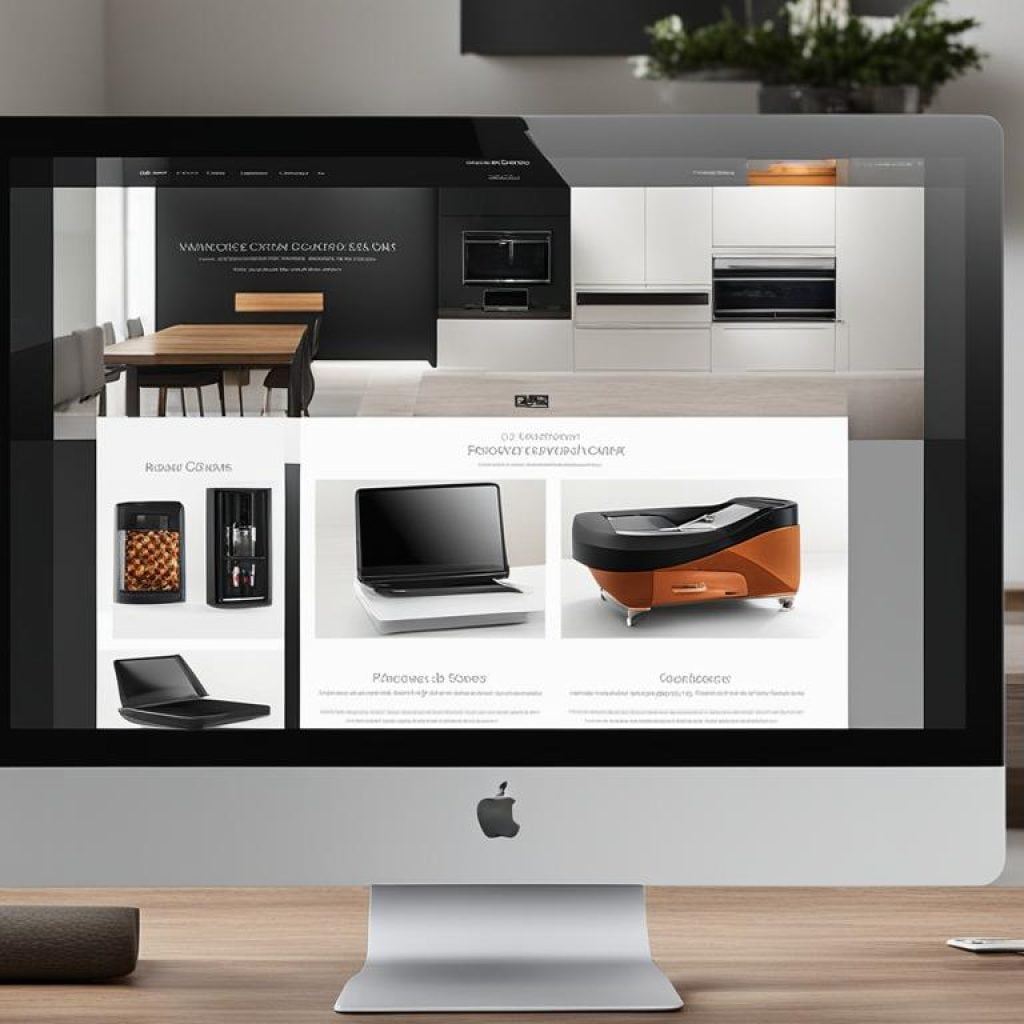
To create an attractive online store, it becomes important to keep up with changing ecommerce design trends. This means that you should incorporate the latest trends and best practices in your ecommerce website design so as to give your clients a unique e-commerce experience they won’t forget.
UX/UI Optimization for Ecommerce Websites
At its core, an excellent e-commerce website hinges on great user experience (UX) and user interface (UI). The site should be easy to navigate and find what customers need. It should also have a visually appealing appearance which will increase customer satisfaction and loyalty. This section will discuss essential tools and techniques that can help you optimize UX/UI of your e-commerce web portal.
What is UX/UI?
UX refers to the overall experience a user has when interacting with a website, while UI relates to the specific design elements that facilitate that experience. UX/UI design aims at creating a seamless, intuitive, enjoyable user experiences online.
Key Elements of UX/UI Design
There are several key elements to consider when optimizing your ecommerce website’s UX/UI:
- Site navigation: Ensure that it is easy to navigate your website through well defined pages and categories hierarchy. You can use breadcrumbs or drop-down menus among others for users to easily access information on the site.
- Visual Design: To display products, use high-quality images or videos. In this case you may think about using minimalist designs with plenty of white space to focus on your content.
- Typography: Select fonts that are easy to read and suitable for your audience. Headings and subheadings can be used to break up the content and make it easier to scan through.
Ecommerce Website Design Tools
Fortunately, there are many tools available to help you optimize your ecommerce website’s UX/UI. Here are a few popular options:
| Tool | Description |
|---|---|
| Google Analytics | Provides insights into how users interact with your website, allowing you to identify areas for improvement. |
| Hotjar | Offers heatmaps, user recordings, and other analytics to help you understand how users navigate your site. |
| Crazy Egg | Provides heatmaps and click tracking to help you identify problem areas on your website. |
With these tools, you can gain insights into how users interact with your website and thus improve its UX/UI.
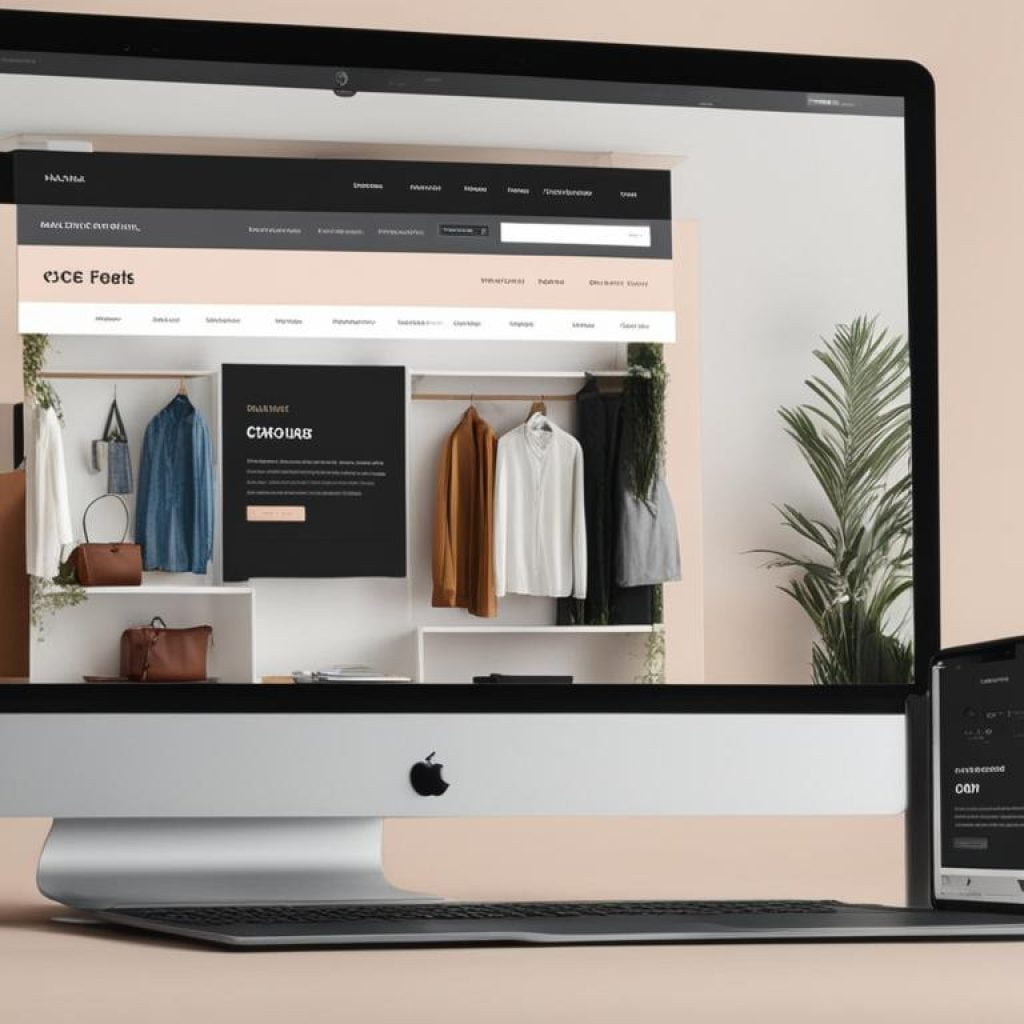
Your ecommerce website’s UX/UI is something that you will continue tweaking throughout its lifespan. This is done by keeping an eye on current design trends while also analyzing user data regularly so as to create a site that maximizes conversions and customer satisfaction.
Conversion-Driven Ecommerce Website Design
Creating an e-commerce website is about giving users a great experience that results in high conversion rates. Conversion-driven design starts with understanding the needs of the user, providing simple explanations of what the product is and does, as well as guiding the user through the purchase process. In this section, we will explore best practices for designing an ecommerce website with conversion as the primary focus.
1. Simplicity
Conversion rates can be significantly improved by keeping your ecommerce website simple; it should have easy-to-understand navigation and intuitive design. As soon as they visit the website, users must understand this quickly. Do not include too many visual elements in it or make the pages cluttered. Instead, create a clean intuitive interface that will help users to buy goods online.
2. Use High-Quality Images and Video
The probability of making a purchase is much higher when using high quality images and video. Make sure that your ecommerce website’s product images are high-resolution that show features of the product. If possible, include videos to demonstrate how the product works or highlight its uniqueness to users. This is a good way of ensuring that users know how the product works and therefore it can increase their confidence in it.
3. Optimize Your Checkout Process
The checkout process represents the last step of buying you take as a customer and thus is very important for conversions. For that reason, you need to ensure an easy-to-understand user-friendly checkout process which tells them what to do next. Throughout the checkout procedure, use clear calls to action so as to avoid confusion and guarantee secureness during checkout process. It may be worth adding a progress bar displaying how far along in the process they are, as well as allowing for editing cart content easily before finalizing purchase.
4. Utilize Social Proof
Social proof plays a critical role in building trust for products among users. On your site include customer reviews, ratings and testimonials showing how satisfied previous customers have been with your product(s). This ensures that users develop some level of confidence while making purchase decisions by helping them feel more comfortable with their choices during this stage of their shopping experience.
5. Ensure Mobile-Friendliness
A significant portion of online shopping occurs on mobile devices; hence optimizing your ecommerce website is essential for mobile devices. The mobile site should be able to fit well on small screens with a simplified layout. There are mobile specific features you could implement e.g. click to call button for easy navigation of the mobile users.
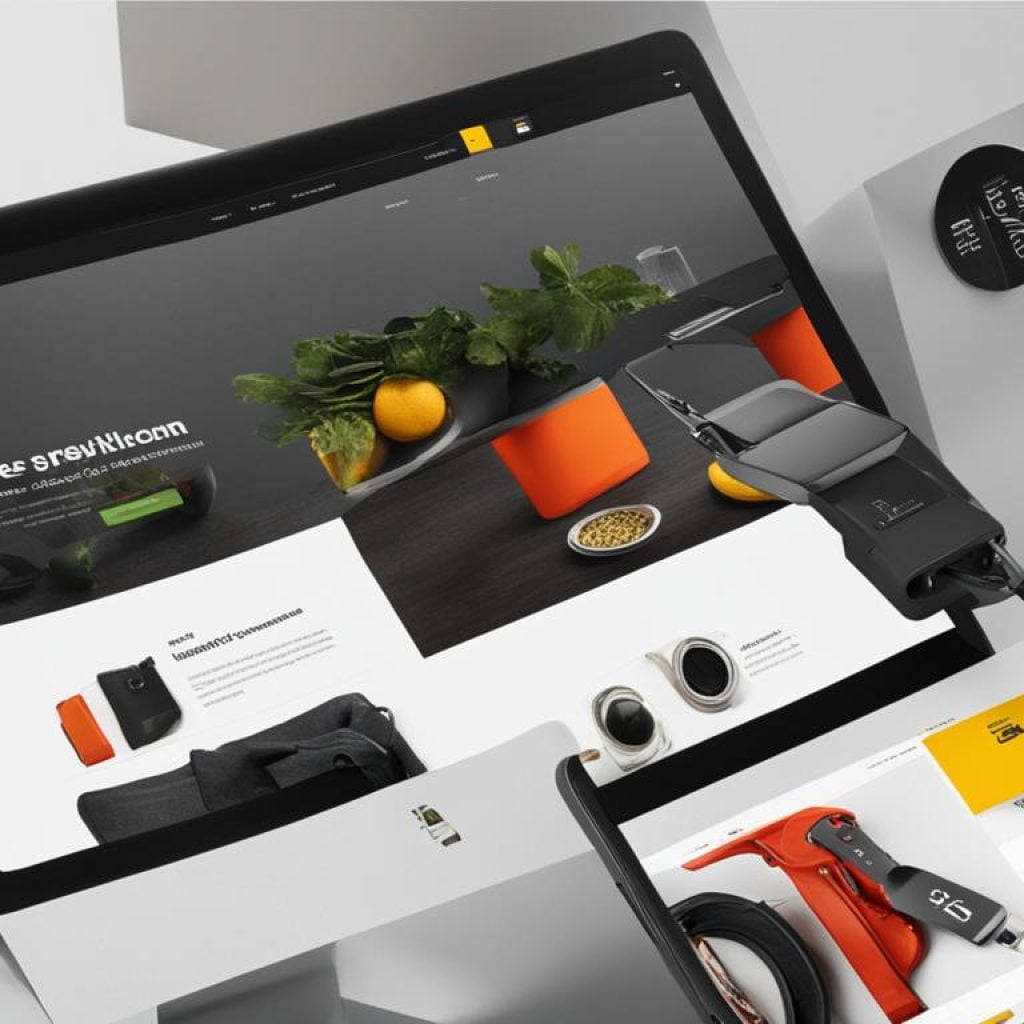
By implementing these best practices, you can design a conversion-driven ecommerce website that meets user needs, increases trust and confidence in your product, and ultimately drives sales. Consider integrating high-quality images and video, social proof, mobile-friendliness and ease of use in your website’s user journey.
Conclusion
Designing an ecommerce website that is visually appealing, user-friendly, and conversion-driven is crucial for businesses that want to succeed in the ever-growing digital marketplace. By following the steps and best practices we’ve outlined in this article, you can ensure that your online store engages customers and boosts sales effectively.
Essential Elements
Remember, an ecommerce website should have a clear layout, optimized for ease of navigation and user interaction. Factors that can significantly impact user experience and conversion rates include responsive design, mobile-friendliness, and search engine optimization.
Design Trends
Keeping up with the latest design trends can help your online store stay visually appealing and competitive. However, choosing the right design elements for your ecommerce website is essential. Consider which design trends are suitable for your business and target audience, and how they can be implemented effectively.
Conversion-Driven Principles
Your ecommerce website’s design should have a clear focus on conversion. Use design elements that encourage visitors to make purchases and provide a seamless shopping experience. Aim for a clean, simple design that emphasizes your products’ value, rather than distracting customers with unnecessary details or elements.
By implementing these principles, your ecommerce website could become a powerful tool for growing your business, building your brand, and increasing your sales.
How do I design an ecommerce website?
To design an ecommerce website, you need to follow several steps and best practices. These include conceptualization, planning your website layout, optimizing for user experience, ensuring mobile responsiveness, and keeping up with the latest design trends. By following these guidelines, you can create an engaging and conversion-driven online store.
What are the key components of an ecommerce website design?
The key components of an ecommerce website design include the layout, navigation menus, product pages, shopping cart, search functionality, checkout process, and contact information. Each of these elements is crucial in providing a seamless and user-friendly shopping experience for your customers.
How can I optimize my ecommerce website for user experience?
Optimizing your ecommerce website for user experience involves ensuring easy navigation, clear calls-to-action, fast-loading pages, intuitive product categorization, and a user-friendly checkout process. Additionally, you should incorporate visuals, product reviews, and personalized recommendations to enhance user engagement and satisfaction.
Why is it important to have a responsive ecommerce website design?
Having a responsive ecommerce website design is essential because it ensures that your website adapts to different screen sizes and devices. This responsiveness improves user experience and helps boost your website’s search engine ranking. With the increasing use of mobile devices for online shopping, a mobile-friendly design is crucial for attracting and retaining customers.
How can I design an engaging online store?
To design an engaging online store, focus on visually appealing product pages, high-quality product images, clear and persuasive descriptions, interactive elements such as videos and product demos, and captivating banners or promotional graphics. Creating a seamless and enjoyable online shopping experience will help attract and retain customers.
What factors should I consider when choosing an ecommerce website layout?
When choosing an ecommerce website layout, consider factors such as the nature of your products, your target audience, the number of products you offer, and the desired user experience. It’s important to select a layout that makes it easy for visitors to find and purchase products, while also reflecting your brand’s aesthetic and values.
How can I stay updated with current ecommerce design trends?
To stay updated with current ecommerce design trends, regularly research and follow industry blogs, websites, and design influencers. Attend design conferences and webinars, read design magazines, and explore design inspiration platforms. Engaging with the design community and observing successful ecommerce websites can help you identify and implement the latest trends effectively.
What tools can I use to optimize my ecommerce website’s UX/UI?
There are several tools available to optimize your ecommerce website’s UX/UI. These include user testing platforms, heat map analytics, A/B testing tools, wireframing and prototyping software, and website performance monitoring tools. By utilizing these tools, you can gather valuable data and insights to enhance your website’s usability and overall customer experience.
How can I design an ecommerce website that drives conversions?
To design an ecommerce website that drives conversions, focus on creating clear and compelling calls-to-action, providing trust symbols and security assurances, simplifying the checkout process, incorporating customer reviews and testimonials, and offering personalized product recommendations. Additionally, analyze user behavior data and continuously optimize your website based on conversion rate optimization best practices.




